What Ficus Benjamin looks like, plant varieties, care rules, crown formation methods
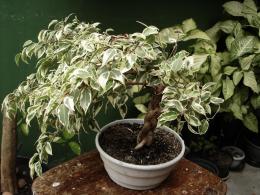
Among house plants, a special place is given to ficus plants.
Tall trees with lush foliage cannot help but attract attention. This is exactly how, in a few words, you can describe what Ficus Benjamin looks like.
Content:
- What is Ficus Benjamin, what does it look like in the photo
- Varieties of Ficus Benjamin
- Ficus Benjamin Natasha, what it looks like, features
- How to decorate Ficus Benjamin, photos and videos
- Crown trimming
- Options for trunk formation
- Basic rules for plant care
- What healthy ficus benjamina roots look like when pruned
- Ficus benjamina in the interior
What is Ficus Benjamin, what does it look like in the photo
What we used to call ficus is actually a type of rubber plant. In the wild, it is distributed in northern Australia and South Asia.
The relationship between wild representatives and cultivated forms in the photo is quite difficult to recognize. Thus, domestic varieties and species, represented by neat bushes or trees with glossy foliage, have little correlation with huge trees, up to 30 m in height.
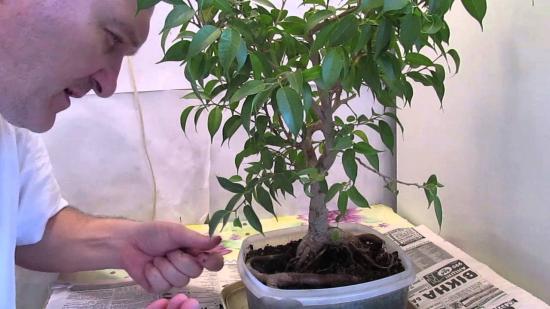
Other features of the plant include:
- Erect shoots;
- Elongated oval leaves with thin, glossy skin. They reach 6-13 cm in length and 2-6 cm in width;
- The foliage stalk is small, up to 2 cm;
- The cut stem is round, covered with gray bark with brown dashes;
- The branches are drooping, the crown is quite wide;
- Produces aerial shoots that can take root and reproduce as a new plant.
It is highly decorative and, subject to proper care, pleases owners with glossy green foliage.
Varieties of Ficus Benjamin
There are a large number of subspecies and varieties.

The most notable are those listed in the table.
| Anastasia | Can be recognized by the elongated shape of the plate, which has a light green-yellow tint towards the edges. |
| Baroque | Easily recognized by the characteristic shape of the leaves, twisted into a spiral. |
| Boucle | They are distinguished by a curved plate shape that resembles a hemisphere |
| Viandi | The leaves are characteristically glossy, but the trunk is curved, resembling a bonsai tree. |
| Daniel | Representatives are distinguished by large matte leaves with a wavy edge |
| Kinky | A dwarf representative, distinguished by the light border of the leaf blades. Needs frequent crown pruning |
| Natasha | The leaves are small, the branches form an oval crown |
| Reginald | It is distinguished by dark stripes near the central vein of the leaf, which turn into a light green color towards the edges. |
| Exotic | It is easy to care for. You can recognize it by the wavy curved edges of the leaf blade. |
Each variety has characteristic features that must be taken into account when choosing a flower. But the variety of types allows you to choose exactly what you need.
Ficus Benjamin Natasha, what it looks like, features
One of the most representative Benjamin ficus is the dwarf Natasha.
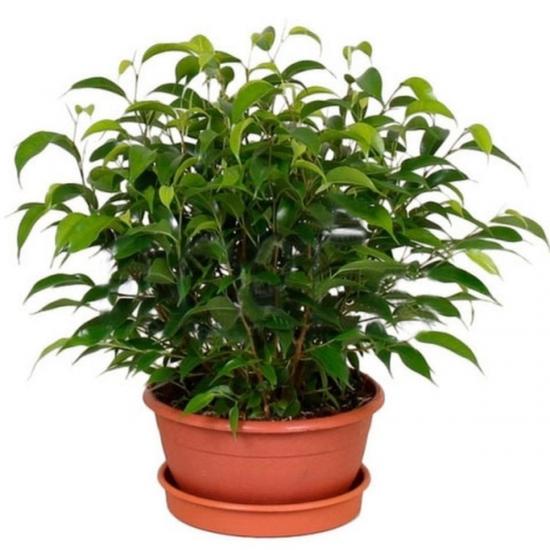
Characteristic features include:
- A strong root system, which over the years occupies the entire pot and gradually appears above the soil;
- A narrow and flexible trunk of a brownish hue with an abundance of drooping branches;
- The branches are small, but grow densely and require periodic pruning;
- The leaves are glossy, with sharp ends, slightly curved along the central vein.
A characteristic feature is the fact that several plants planted in one container often intertwine and form one strong trunk.
How to decorate Ficus Benjamin, photos and videos
Planting and growing Benjamin is half the battle. No less important is the formation of its crown.

This can be done in several ways:
- Standard - young plants that have a well-developed axial shoot lend themselves well to this forming method. To do this, it is enough to cut off the lateral shoots of the five upper branches and pinch the apical buds. The result is a dense crown on the trunk without branches;
- Bush - it is enough to pinch the axial shoot to activate the growth of lateral branches. After the side branches reach a length of 10 cm, they are pinched again and those branches that are directed into the bush are cut out.
When the primary form is determined, it is possible to engage in further shaping. So, with the help of pruning, you can form an oval or rounded crown shape, depending on your needs and desires.
You can learn more about the types of crowns and methods of their formation using videos, of which there are plenty on the Internet.
Crown trimming
Depending on the purpose, pruning can be divided into several types, each of which has its own characteristics.
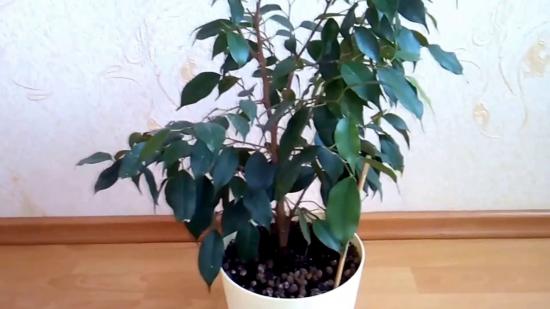
These include:
- Formative - it is recommended to carry out in early spring, before the period of active growth.Before carrying out it is necessary to prepare sharpened pruning shears, activated carbon and a solution of potassium permanganate for processing cuts and pruning shears. Thick sprouts need to be cut at an angle, thin ones by a third;
- Rejuvenating - necessary for flower renewal. It is recommended to start in early spring before the start of the growing season. All dry branches must be removed and live ones cut in half. If the ficus has dried completely, it is recommended to cut it off completely, leaving only a stump no more than ten centimeters in height;
- Sanitary - carried out without reference to a specific time, depending on the need. Aimed at removing diseased, dry and poorly developed branches. If you find branches affected by fungus, you should not wait, but cut off the damaged branches immediately.
- Formative and sanitary pruning is recommended to be carried out annually. This will help keep the flower vigorous for a long time.
Options for trunk formation
Not only the crown, but also the trunk can be shaped. This property is due to its high flexibility, which allows it to be woven into three-dimensional structures. For greater effect, it is recommended to place several containers nearby and work with the shoots of several plants at once.
It is recommended to start forming a trunk after the young shoots reach at least 20 cm in height. It is at this moment that you need to make the first bend for the future structure.
To prevent the shoot from returning to the initial direction of growth, it must be secured with a cord. Subsequently, the shoot slowly bends into the desired shape in the same way.
Let's watch a video about the formation of the trunk:
But not only the cord will help in shaping the trunk.Another method is splicing shoots, which is used in the formation of hedges. To do this, it is necessary to cut the bark of neighboring sprouts and tie them together for fusion.
Basic rules for plant care
In order to ficus pleasing to the eye with lush foliage and active growth, it is important not only to trim the crown in a timely manner, but also to pay some attention to care.
It is so important not to forget about such points as:
- Light - This is a light-loving plant, but it is important to consider that direct sunlight can leave burns on the foliage. The best option is diffused light;
- Temperature - the optimal air temperature is 18-30? C;
- Watering - like a resident of the tropics, ficus loves water. In summer, it is recommended to water the flower every four days; in winter, it is recommended to reduce the frequency of watering to once every ten days. In addition, it is important not to forget about the need to systematically spray the foliage, which is especially important in winter;
- Fertilizers - favorably accept organic and universal mineral fertilizers. It is recommended to apply once a month from the beginning of March to the end of April, once every three weeks in May and once every few weeks from June to September. From November the dormant period begins and the plant must rest.
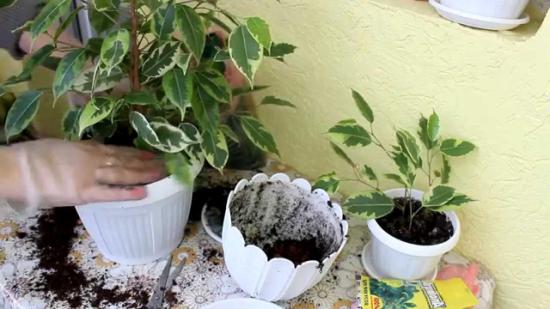
The principles of care are quite simple, compliance with them does not require much effort, but compliance with them has a positive effect on the condition of green pets.
Let's watch a video about what Benjamin's ficus looks like and learn how to care for it:
What healthy ficus benjamina roots look like when pruned
If the plant begins to dry out, wither, or the leaves begin to droop for no apparent reason, it is worth checking the roots. Normally, they are tight, dense, without traces of mucus or damage.
However, if, upon removal from the flowerpot, traces of rotting are found on the root, it is recommended to immediately remove the affected areas. Only pruning will help keep the plant alive.
Regulating watering will help avoid rotting. It is the abundance of moisture that is the first cause of root rotting.
Ficus benjamina in the interior
One of the main features of this plant is its versatility. It looks equally good both in the house and in the greenhouse.
Depending on where you need to place it, you can choose the right variety with suitable characteristics.
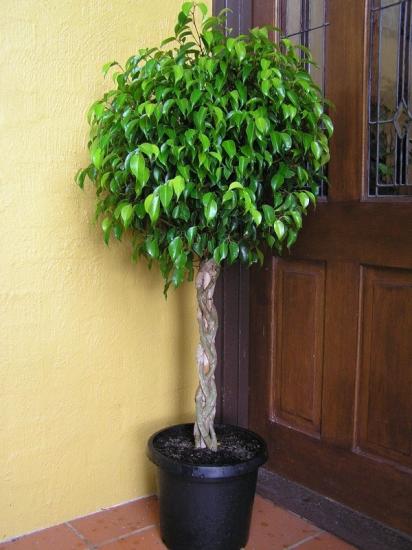
Thanks to fast regeneration and a high level of flexibility of the branches, the flower can be used in a wide variety of compositions.
Ficus will look appropriate in any interior, bringing a touch of freshness, while looking extremely aesthetically pleasing.
Ficus benjamina is an amazing plant that will look appropriate in any room. Despite some difficulties in care, the beauty of the plant is worth it.









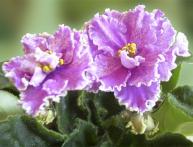


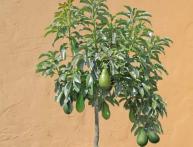

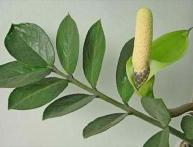
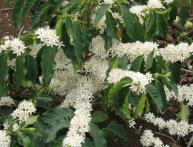
Comments
We had such a ficus, but we did not shape its crown in any way, but only fertilized and watered it. How beautifully his intertwined trunk turns out. I'll have to try it, but this requires a young plant.
Ficus plants, of course, are quite beautiful plants, but very finicky, for example, most often they are attacked by spider mites and other parasites, they need careful and attentive care.
My ficus benjamina is over six years old. I planted three sprouts side by side in order to later form a single tree, intertwining the sprouts with each other. But I didn’t do this at the right time and now I have to tie the trunks together to keep the shape of a single tree.
In the photo, the ficus with intertwined trunks looks very beautiful.You should definitely try to root a few branches and form a similar tree. After watching the video, I realized that I was doing everything wrong.